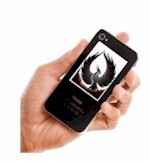|
|


IVR Solutions
This section of our technical library presents information and documentation relating to IVR Development and custom IVR software and products.
Business phone systems and toll free answering systems (generally 800 numbers and their equivalent) are very popular for service and sales organizations, allowing customers and prospects to call your organization anywhere in the country.
The PACER and Wizard IVR systems add another dimension to our call center phone systems and solutions.
What is Interactive Voice Response?. An Interactive Voice Response (IVR) processes inbound phone calls, plays recorded messages including information extracted from databases and the internet, and potentially routes calls to either inhouse service agents or transfers the caller to an outside extension.
The following is an article relating to the IVR market including tips and best practices as well as product and answering service information.
The New Economics for Voice in the Call Center
Speech technology is saving companies big bucks.
Speech technologies are delivering customer satisfaction and ROI.
by Steve Ehrlich
Almost a decade has passed since the deployment of the first large-scale, voice-activated system. During this time thousands of contact centers around the world in many different industries have integrated speech technology into their self-service strategy. These enterprises have universally benefited from higher customer satisfaction scores and lower operational costs--commonly recovering their investment in fewer than nine months.
Yet the number of companies implementing speech-based systems is still relatively small. Those that have explored using the technology in the past have been discouraged by the potential for poor system performance and customer acceptance, the high initial development costs, and the complex, proprietary nature of the implementations. But enterprises considering a speech solution today are finding an environment that is very different: Speech is easier to deploy, dramatically more affordable, and based on open standards. Now, it's even packaged and works right out of the box.
Industry insiders will note that the question is no longer, Does speech recognition work? The tens of millions of calls handled daily by speech systems worldwide make the answer resoundingly clear. In some cases these systems are replacing and enhancing aging touch-tone applications; in others they are implementing functions, such as name and address capture, which previously could not be automated. In the majority of speech deployments, automation rates are up, costs are down and callers are viewing the change as a significant step up in the quality of service.
The emergence of industry standards has been the catalyst for many of the recent improvements in the progression of speech-enabled solutions. The move to open systems and Web-compatible architectures has made the required speech software and hardware affordable and comfortable for IT. And on the heels of standards-based platforms, packaged speech applications have now emerged, eliminating the need for custom and specialized development efforts previously responsible for much of the time-to-market, risk, and cost constraints.
In fact, packaged applications have made speech much more accessible to and affordable for call centers of all sizes. They simplify the transition to speech from a traditional IVR--delivering a low cost-per-call and a significantly improved caller experience. Additionally, packaged applications are pretested, making them tuned for performance and caller satisfaction. You can familiarize yourself with the applications before you make a buy decision.
And it's important to note that managing and maintaining speech applications over time is no longer considered only a function for the speech programmer. It's now possible for business users to simply insert new marketing promotions into call flows that can help drive revenue and create a more personalized experience for callers. Finally, packaged applications provide the flexibility for speech systems to operate on many different platforms, either on your own premises or in a hosted environment.
Just as we watched the implementation of corporate Web sites become a crucial business requirement and milestone in the early 1990s, voice automation is rapidly becoming today's new business and competitive necessity. And thanks to open standards and packaged applications, speech is now available to every company, not just the Fortune 500.
About the Author
Steve Ehrlich is vice president of marketing for Apptera. He has spent more than 17 years in the software industry, and has been a leading speech advocate during the past six years. Before joining Apptera in 2002 he spent four years at Nuance. Prior to that Ehrlich was with Oracle for 12 years. He is a member of the editorial advisory board for Speech Technology magazine and is a frequent speaker at industry events.
Contact DSC today. to learn more about our IVR services and IVR application development software.
|



